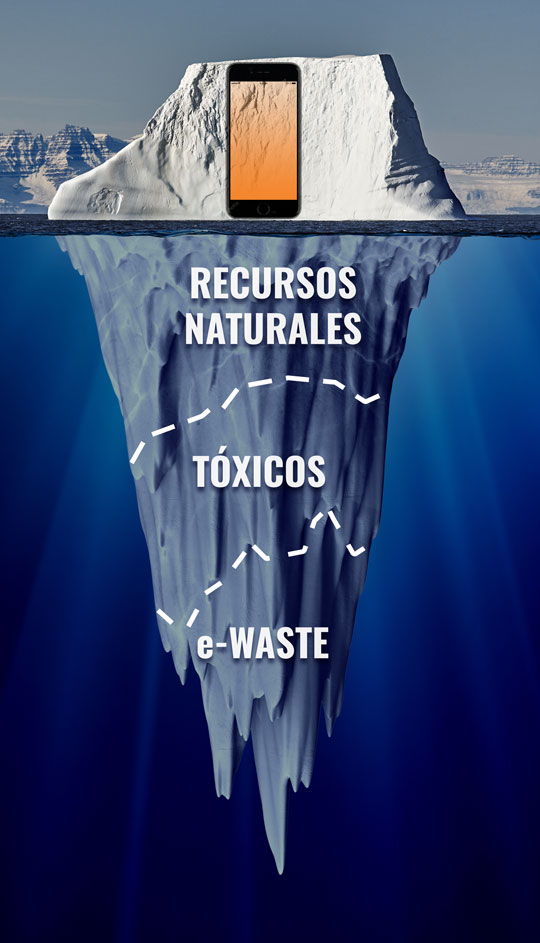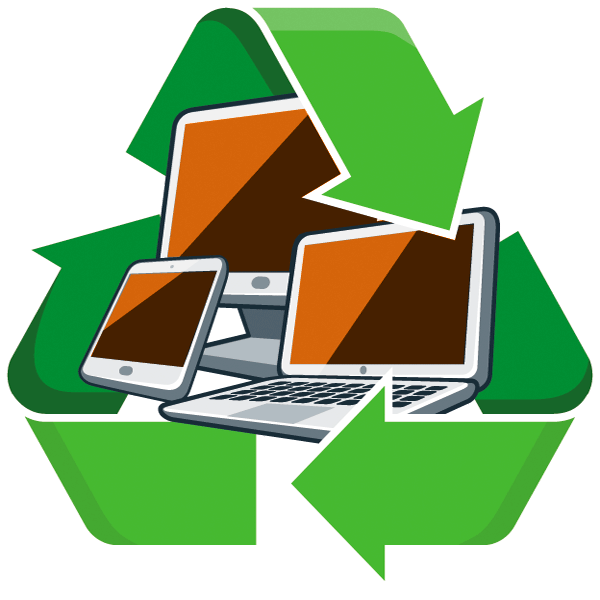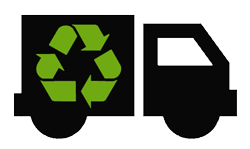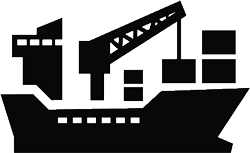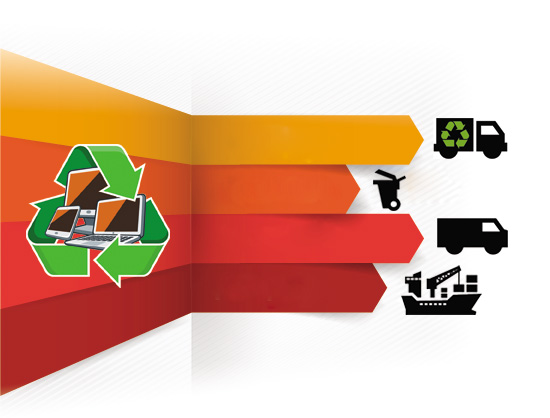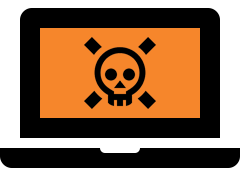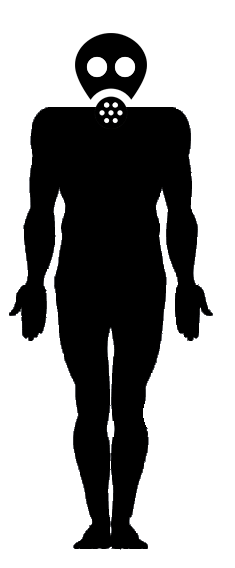The Environment and Electronic Devices
To offset your computer’s greenhouse-effect gases emissions, you’d have to use it for between 33 and 89 years before you get a new one.
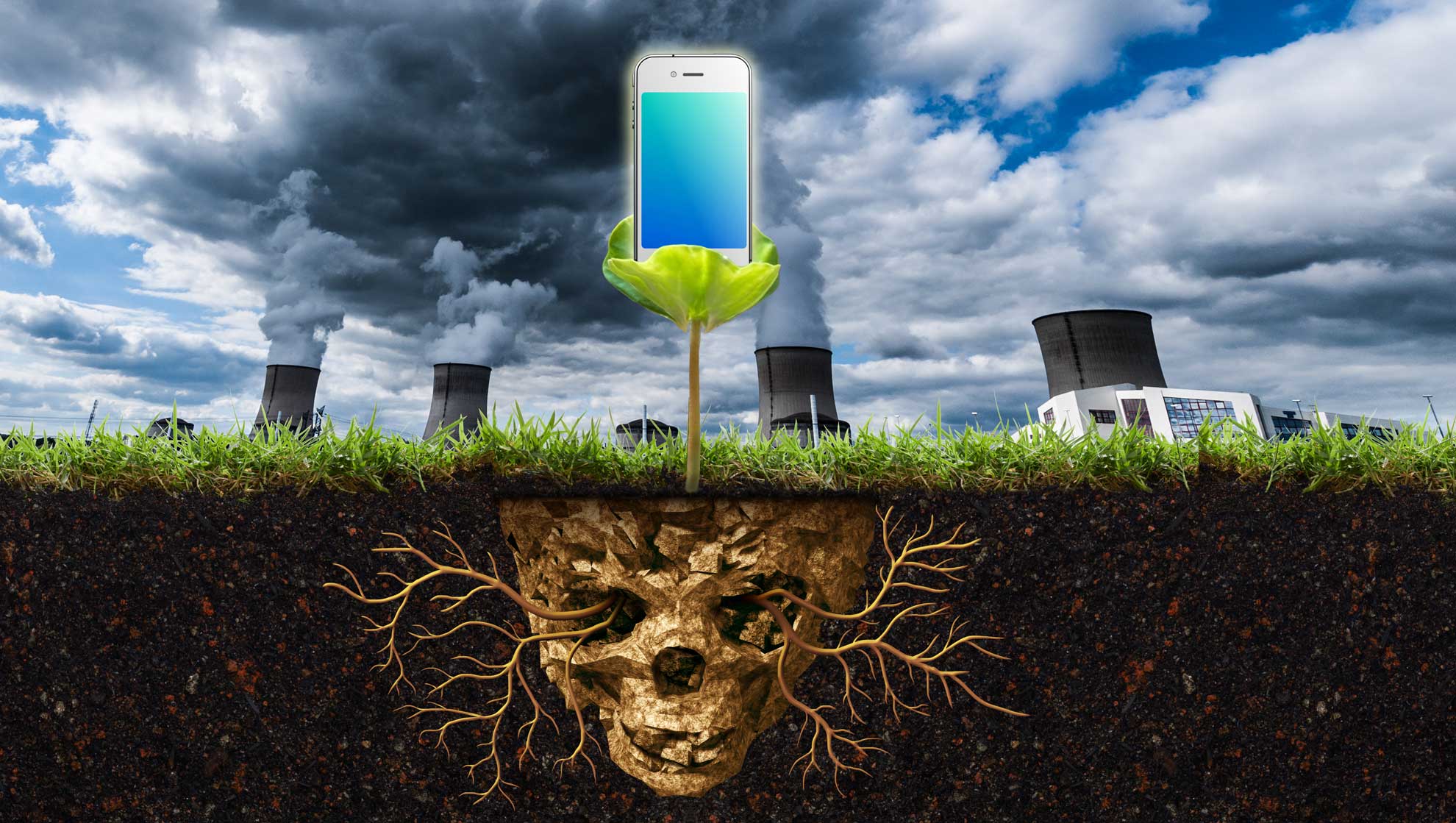
We live our lives surrounded by electronic equipment and we can no longer get by without it. However, we don’t usually think about the consequences of its production and use or our model of consumption. And when we do, we are often unaware of the full complexity of the reality.
Our electronic devices don’t just raise an ethical dilemma; they also pose serious problems for the environment at all stages of their life cycle, but most of all at the initial and final stages of the product’s life.
The life cycle of electronic devices:

01. Production: over-exploitation of natural resources and pollution
What resources are used, on average, to make a computer?
In 2015, more than 164 million laptops were sold.
This means that, in just one year, we use more than 246 billion litres of water, 39,360 tonnes of fuel and 3,068 million tonnes of chemicals.
Sources: El País and Trendforce
And what resources are used, on average, to make a microchip?
You need an average of 132 kg of fuel to produce the microchips that make up a desktop computer.
The energy needed to produce a single microchip is more than the average energy used by a computer over three years of use.
Sources: Lowtech Magazine and WorldWater
What is the true cost of your mobile phone? The origins of your smartphone’s components.
The total use of resources over the course of a product’s life, from mining the components to its final disposal, is known as its “environmental rucksack”.
The environmental rucksack of our technological equipment is very heavy – much greater than the device’s real weight.
To produce one smartphone, we use 44.4 kg of natural resources. For one computer, it’s around one tonne.
To produce all the metal contained in all the mobile phones in circulation today, 450 million tonnes of rock had to be mined and processed, which is 12 times the weight of all the cars circulating in the UK.
For all the mobile phones in the world today, the metal in them would have required 450 million tonnes of rock to be dug up, smashed and processed. This is equivalent to 12 x the weight of all the cars on UK roads.
Sources: The Great Recovery: e-Waste and Naciones Unidas

Your mobile phone’s environmental rucksack

Source: e-Waste en América Latina
The environmental impact of the production of computers, tablets and smartphones is so great that, to offset it, we would have to use each device for between 33 and 89 years.
Source: Umwelt Bundesamt
OUR CURRENT MODEL OF CONSUMPTION
We have to rethink our model of consumption. If we carry on at the current pace, to get to the year 2050 we would need: 8.5 planets to absorb the carbon monoxide, 6 planets to meet demand for steel, 3.5 planets to meet demand for cement, 3.5 planets to meet demand for wood

8.5 planets to absorb carbon monoxide

6 planets to meet demand for steel

3.5 planets to meet demand for cement

3.5 planets to meet demand for wood
Source: Sustainable Design Award, 2004
"The population of the rich countries is 20% of the total world population, but it is responsible for the consumption of 80% of commercial-use energy, 75% of wood, 50% of fish and cereals and 40% of water." (Sustainable Design Award, 2004)
RICH
POOR
02. E-waste: technological rubbish
Despite all the resources used that you have just seen, we throw out our smartphones on average after just 20 months to buy another one (although their useful life is 10 years) and every 3 to 5 years we replace our computers.
These items become electronic waste, or e-waste, which is defined as all the office and home appliances that contain circuits or electrical components and that operate on batteries or a power connection.
In fact, up to 90% of a mobile phone’s materials and 93% of a computer can be recycled.
E-waste, if it is properly recycled, can turn into a good source of money rather than being a problem.
THE COMPOSITION OF YOUR ELECTRONIC DEVICES
THE PROBLEM
In 2014 alone, 41.8 million tonnes of e-waste were produced worldwide.
This amount increases each year by 5%.
THE OPPORTUNITY
Even after their useful life, our devices still have a high commercial value. The estimated value of the e-waste produced in 2014 is 48 billion euros.
The electronics industry uses a large amount of metals and minerals in the production of our devices and these materials are essential for the electronics to work properly. Some are precious metals, some are rare metals. With regard to metals, the problem is not just the exploitation of scarce natural resources, but also the fact that the minerals trade sometimes fuels armed conflict. An example of this is the Democratic Republic of the Congo. Your electronic device may contain up to 60 different elements.
Gold and silver: used because of their electric conductivity and their solubility in tin-based welds.
Cobalt: used in batteries
Tungsten: used because of its high density which is needed to make devices vibrate
Tantalum: used in capacitors
Indium: used in LCD screens
Example composition of a smartphone
These seem to be small amounts but things change when you consider it on a large scale. The amounts of metals like cobalt and palladium used to make mobile phones and tablets are significant:
- Cobalt: 9.4% of global production
- Palladium: 8.9% of global production
A tonne of mined minerals produces, on average, 5 g of gold.
However, from one tonne of recycled mobile phones, you can extract around 280 g of gold.
What happens to our e-waste?
When we throw out our devices, they can follow any one of these four possible routes:
OFFICIAL CHANNELS
Collection through official channels (local refuse facilities, specific special collection initiatives) to be processed and, as far as possible, recycled.
NORMAL WASTE
There are two options here:
- landfill sites (the chemical substances and toxic metals enter the ground)
- incinerators (emissions of greenhouse-effect gases, mercury and dioxin)
COLLECTION - legally and illegally - OUTSIDE OF THE OFFICIAL CHANNELS
Electronic waste ends up in the second-hand market, is exported (see point 4) or is recycled.
SENT TO COUNTRIES IN THE GLOBAL SOUTH
In this case, it will be processed without the necessary safety conditions to protect people and the environment. It is also impossible to recycle it with the results that can be achieved if the appropriate technology is used.
03. Toxic substances for people and the environment
All e-waste contains and produces toxic substances that pose a health risk to humans and are a source of environmental pollution.
For that reason, they should not go in normal waste bins – not even electric cables.
Complete, working electrical devices are not active sources of dangerous residues. However, if they are not treated correctly when they are discarded, the toxic substances can end up in the environment.
Toxins present in our computers and the possible impact of e-waste on our health:
Lead: 10%
Affects the central nervous system, the reproductive system, kidneys

Mercury: 0,1%
Affects the central nervous system, leads to high blood pressure, brain damage, kidney damage

Cadmium: 0,1%
Damage to the stomach,
lungs and kidneys

PVC: 23%
Foetal deformity, liver cancer, damage to the nervous system


Arsenic: 0,02%
Affects the lungs, skin and prostate and may cause liver cancer

Beryllium: 0,02%
Respiratory and cardiac problems, lung cancer

Barium: 0,04%
Brain damage, problems with the liver, kidneys, stomach, blood pressure

Hexavalent chromium: 0,1%
Damage to the liver, kidneys and stomach, lung cancer
The effects on people may be direct, where they affect people who work processing these materials without sufficient protection, or indirect, whereby the pollutants enter the water and earth and affect the population at large through the food chain.
Children are at the highest risk of absorbing dangerous chemicals and for that reason, in 2013, the WHO issued the “Geneva Convention on E-waste and Children’s Health”.
The pollution from these dangerous residues can spread a great distance, as far as dozens of kilometres from the original deposit, via bioaccumulation and atmospheric transport.
Pollution by toxins originating from electronic waste can reach up to 50 km from the waste site.
Concentrations of heavy metals dissolved in the water in areas around electronic waste sites are up to 18 times higher than in distant areas.
Electronic residues are an emerging threat for the environment due to the presence of heavy metals and flame retardants, released by poor practices in e-waste recycling, such as incineration and the use of solvents. Furthermore, the threats posed by large e-waste sites can also apply to smaller sites, which make up the majority worldwide.
The best strategy to preserve our planet is to reduce our consumption and to support responsible use and consumption of the available resources.
If you are interested in finding out what you can do to improve the world where you live, subscribe to this website: Conflict-Free Technology.
If you want to know what we do at Alboan to provide access for all to the development of humanity, dignified life and justice, visit our website.
And if you have found all this interesting, don’t forget to share it on your networks!


